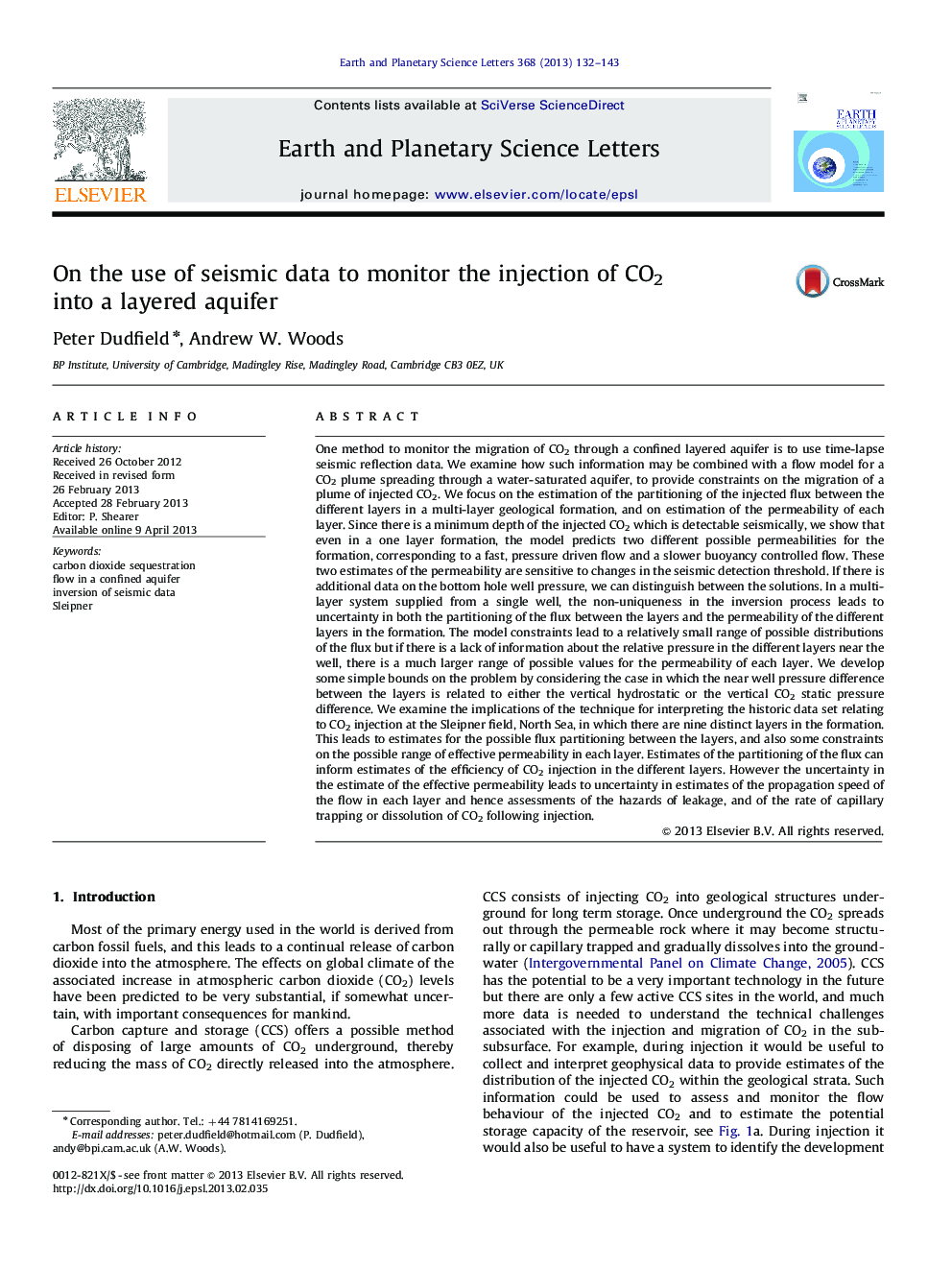| کد مقاله | کد نشریه | سال انتشار | مقاله انگلیسی | نسخه تمام متن |
|---|---|---|---|---|
| 6430314 | 1634785 | 2013 | 12 صفحه PDF | دانلود رایگان |

One method to monitor the migration of CO2 through a confined layered aquifer is to use time-lapse seismic reflection data. We examine how such information may be combined with a flow model for a CO2 plume spreading through a water-saturated aquifer, to provide constraints on the migration of a plume of injected CO2. We focus on the estimation of the partitioning of the injected flux between the different layers in a multi-layer geological formation, and on estimation of the permeability of each layer. Since there is a minimum depth of the injected CO2 which is detectable seismically, we show that even in a one layer formation, the model predicts two different possible permeabilities for the formation, corresponding to a fast, pressure driven flow and a slower buoyancy controlled flow. These two estimates of the permeability are sensitive to changes in the seismic detection threshold. If there is additional data on the bottom hole well pressure, we can distinguish between the solutions. In a multi-layer system supplied from a single well, the non-uniqueness in the inversion process leads to uncertainty in both the partitioning of the flux between the layers and the permeability of the different layers in the formation. The model constraints lead to a relatively small range of possible distributions of the flux but if there is a lack of information about the relative pressure in the different layers near the well, there is a much larger range of possible values for the permeability of each layer. We develop some simple bounds on the problem by considering the case in which the near well pressure difference between the layers is related to either the vertical hydrostatic or the vertical CO2 static pressure difference. We examine the implications of the technique for interpreting the historic data set relating to CO2 injection at the Sleipner field, North Sea, in which there are nine distinct layers in the formation. This leads to estimates for the possible flux partitioning between the layers, and also some constraints on the possible range of effective permeability in each layer. Estimates of the partitioning of the flux can inform estimates of the efficiency of CO2 injection in the different layers. However the uncertainty in the estimate of the effective permeability leads to uncertainty in estimates of the propagation speed of the flow in each layer and hence assessments of the hazards of leakage, and of the rate of capillary trapping or dissolution of CO2 following injection.
⺠Including a seismic detection greatly changes the inversion results. ⺠In a single layer system, two solutions arise from one seismic measurement. ⺠In a multi-layered system, large range of predicted permeabilities of each layer. ⺠In a multi-layered system, small range of predicted fluxes into each layer.
Journal: Earth and Planetary Science Letters - Volume 368, 15 April 2013, Pages 132-143